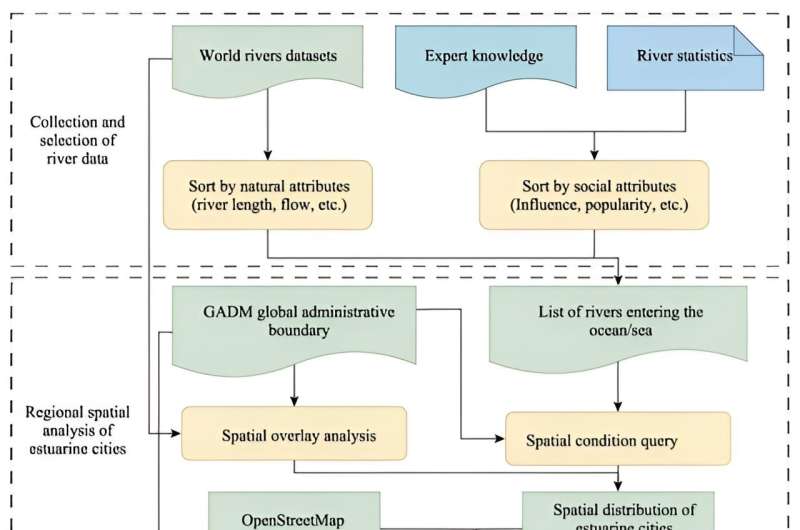This article has been reviewed according to Science X's editorial process and policies. Editors have highlighted the following attributes while ensuring the content's credibility:
fact-checked
proofread
Tidal innovations: Charting the course for coastal urban sustainability

Estuarine cities, as a unique type of coastal city, face distinct development and conservation challenges. Issues such as global warming, sea-level rise, and human activities significantly impact their ecological environments, making them challenging for achieving sustainable development goals.
Academic attention to estuarine cities has been limited, however, with a lack of clear definitions and systematic development models. Due to these challenges, there is a pressing need for in-depth research to explore the unique characteristics and sustainable development strategies of estuarine cities.
Research conducted by Professor Chen Mingxing's team at the Institute of Geographic Sciences and Natural Resources Research of the Chinese Academy of Sciences, was published in the Journal of Geographical Sciences on January 12, 2024. The study utilizes global river and city data and systematically analyzes the geographical and socioeconomic characteristics of 50 representative estuarine cities at the mouth of the great river.
The study identifies the unique natural geographical features of estuarine cities, including low altitude, flat terrain, and abundant biological resources. The climate is favorable, with average annual temperatures between 10°C and 25°C and ample precipitation, resulting in high biological productivity.
Socioeconomically, these cities exhibit significant variations in population size and economic development. Some cities have populations exceeding 10 million, while others have less than 0.1 million. Infrastructure is relatively well-developed, with high transportation network density and significant port throughput.
The research proposes eight characteristic development models for estuarine cities, including open and inclusive city spirit, high-quality livable cities, innovation-driven development, efficient port-city integration, international financial center construction, ecological protection and restoration, active cultural tourism promotion, and international exchanges.
Professor Chen Mingxing stated, "Estuarine cities are frontier regions facing global changes and sustainable development challenges, thus studying the unique geographical and socioeconomic characteristics of these cities is crucial. Our research not only provides theoretical support for the development of estuarine cities but also offers practical guidance for policymakers and urban planners."
The findings of this study have significant implications for the development of global estuarine cities. By understanding the unique characteristics and development models of estuarine cities, policymakers can better formulate sustainable development strategies to promote ecological protection and economic growth in these areas.
In addition, the eight proposed development models offer valuable references for other types of coastal cities, which may further contribute to the achievement of global urban sustainability goals.
More information: Mingxing Chen et al, Geographical features and development models of estuarine cities, Journal of Geographical Sciences (2024). DOI: 10.1007/s11442-024-2193-3
Provided by TranSpread





















